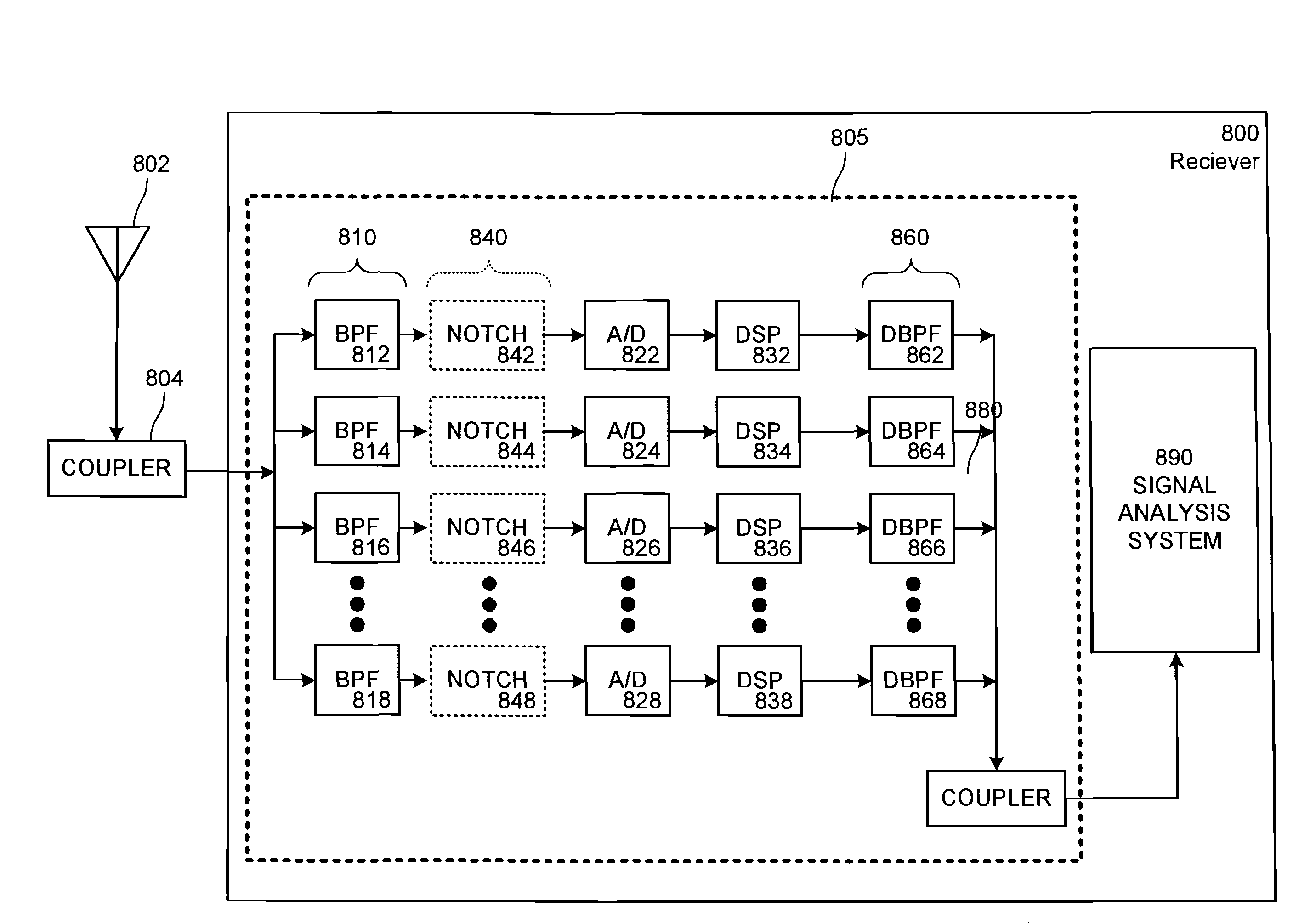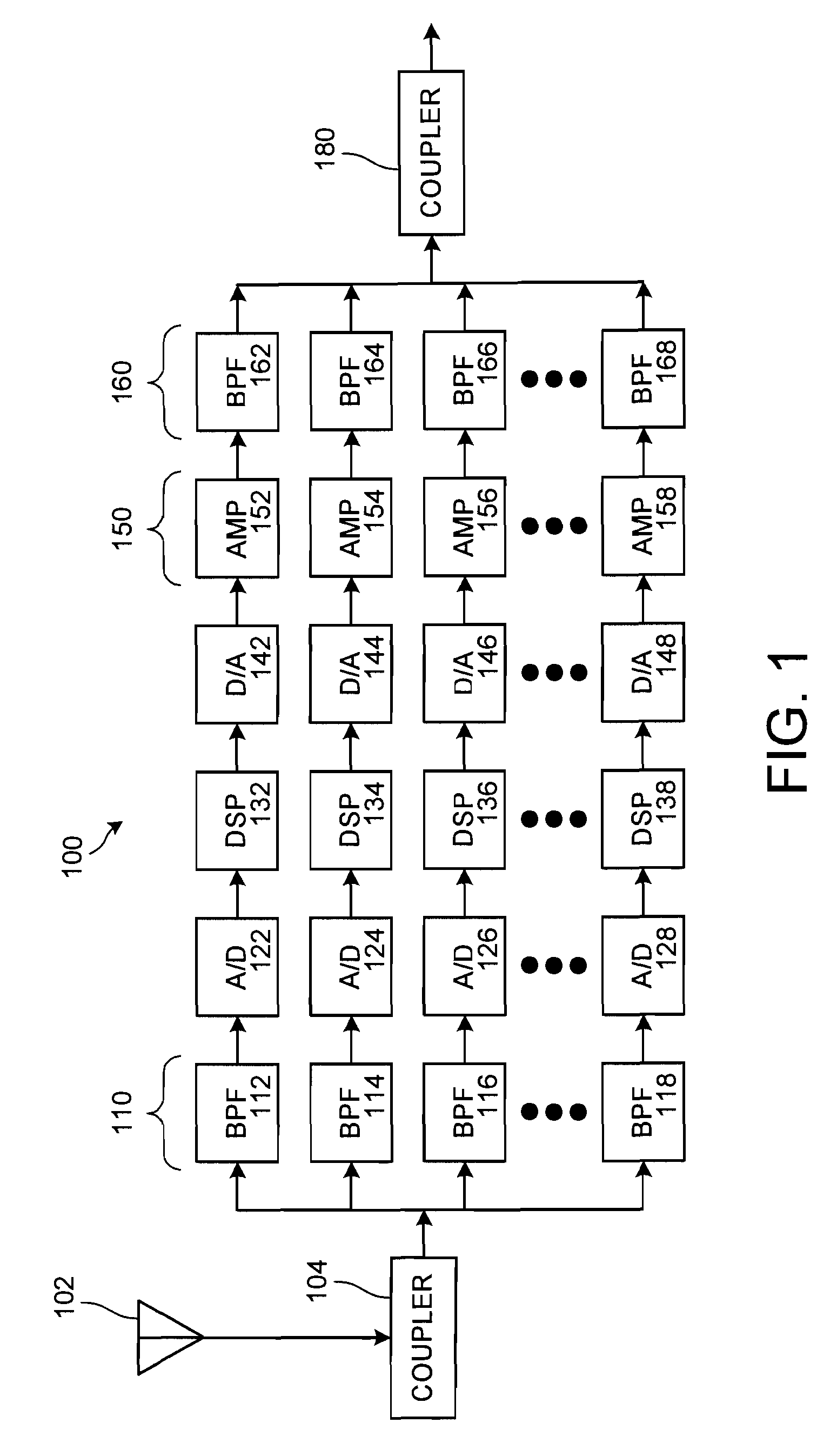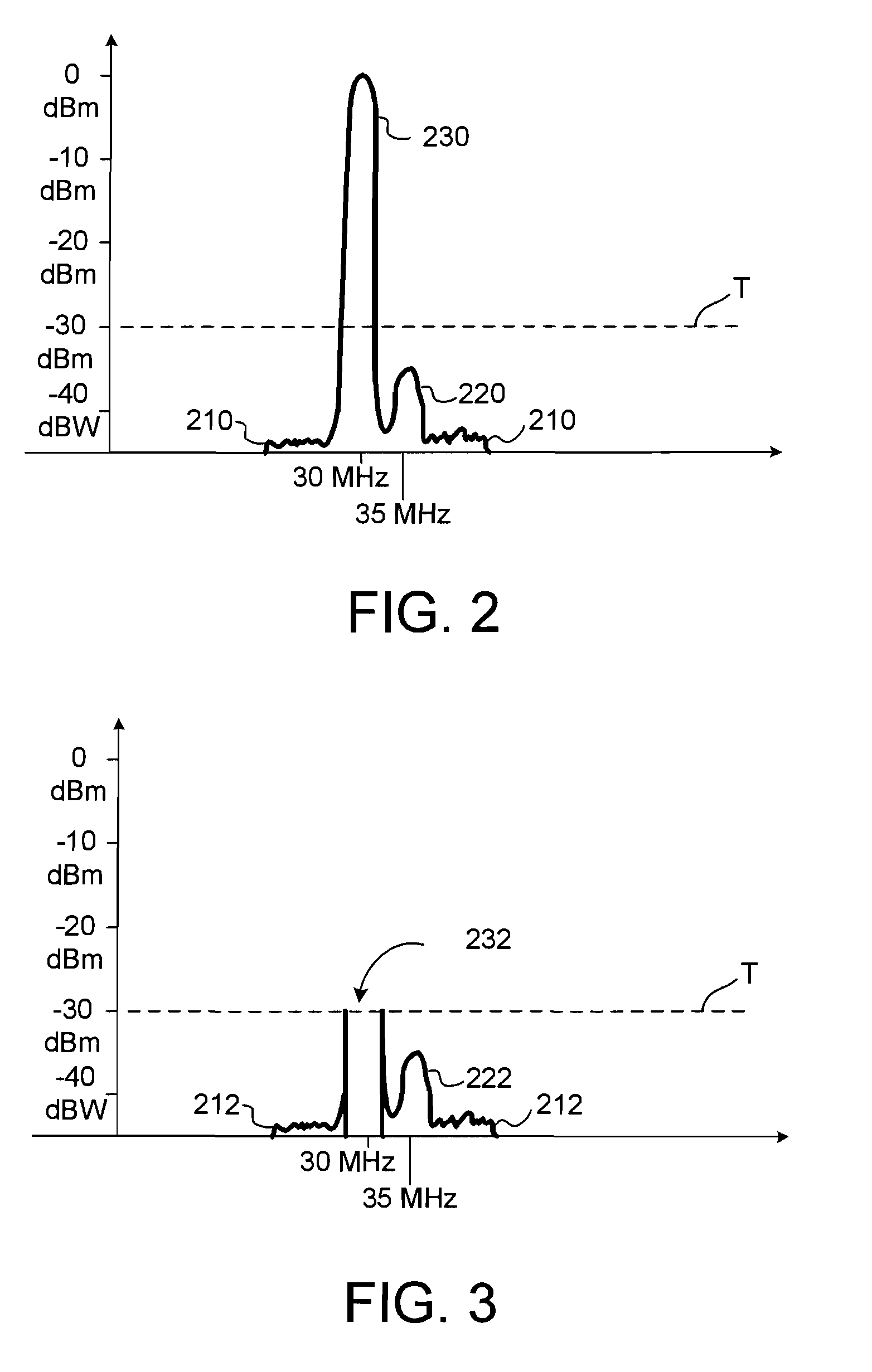Digital comb limiter combiner
a limiter combiner and digital comb technology, applied in the direction of transmission, electrical equipment, etc., can solve the problems of reducing the physical range from which the signal intelligence receiver can receive signals, reducing the physical range of the signal intelligence receiver, so as to protect amplifiers and limiters in the receiver front end from strong interference outside the communications signal bandwidth
- Summary
- Abstract
- Description
- Claims
- Application Information
AI Technical Summary
Benefits of technology
Problems solved by technology
Method used
Image
Examples
Embodiment Construction
[0024]The comb filter banks at the input and output of the receiver divide the waveforms into different frequency sub-bands. Each comb limiter combiner (CLIC) sub-band is substantially narrower than 50 MHz, for example about 5 MHz wide. Within each sub-band, the high-power interference is processed to reduce levels to the spurious-free dynamic range of signal intelligence and electronic intelligence (SIGINT / ELINT) receivers. The CLIC accomplishes this without generating significant intermodulation products.
[0025]By digitizing the signal within each of the sub-bands, digital signal processing technology can be brought to bear on the signal. In particular, strong interfering signals in close proximity in the frequency spectrum to a signal of interest can be dealt with using frequency excision. By this technique the bulk of the energy of the strong interfering signal is removed while leaving undisturbed a substantial amount of the energy of the signal of interest.
[0026]The embodiments ...
PUM
 Login to View More
Login to View More Abstract
Description
Claims
Application Information
 Login to View More
Login to View More - R&D
- Intellectual Property
- Life Sciences
- Materials
- Tech Scout
- Unparalleled Data Quality
- Higher Quality Content
- 60% Fewer Hallucinations
Browse by: Latest US Patents, China's latest patents, Technical Efficacy Thesaurus, Application Domain, Technology Topic, Popular Technical Reports.
© 2025 PatSnap. All rights reserved.Legal|Privacy policy|Modern Slavery Act Transparency Statement|Sitemap|About US| Contact US: help@patsnap.com



